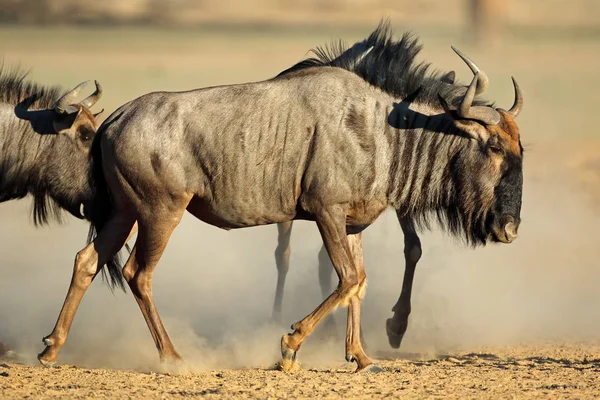Wildebeests are well-known for their annual migration across the plains of Africa, which is considered one of the most spectacular wildlife events in the world. In this article, we will take a closer look at the migration patterns of wildebeests, including the challenges they face and the adaptations they make.
Migration Routes
Wildebeests typically migrate across vast distances, following a circular route that covers a distance of up to 1,000 miles. The migration usually begins in the Serengeti plains of Tanzania, where the wildebeests give birth to their young. From there, they move northwards to the Masai Mara plains in Kenya, before returning to the Serengeti.
The wildebeests typically migrate in large herds, which can number in the hundreds of thousands. This mass migration is essential for their survival, as it helps them to find food and water, avoid predators, and find suitable breeding grounds.
Challenges Faced During Migration
The migration of wildebeests is not without its challenges. One of the biggest challenges is finding enough food and water to sustain the large herds. This can be particularly difficult during the dry season, when water sources may become scarce.
Another challenge faced by wildebeests is the risk of predation. During the migration, they are vulnerable to predators such as lions, cheetahs, hyenas, and crocodiles. Wildebeests have developed a range of adaptations to help them avoid predators, such as traveling in large herds and being vigilant for signs of danger.
Adaptations Made by Wildebeests
Wildebeests have made a number of adaptations to help them survive during their migration. For example, they are able to go for long periods without water, thanks to their ability to extract moisture from the vegetation they eat.
Wildebeests are also able to detect the presence of predators using their keen sense of smell and hearing. They can detect the scent of predators from up to 500 meters away, and are able to hear the low-frequency sounds of lions and other predators from a distance of up to 2 miles.
Conclusion
In conclusion, the migration patterns of wildebeests are a fascinating example of how animals have adapted to survive in challenging environments. The wildebeests’ ability to migrate long distances, travel in large herds, and detect the presence of predators are just a few of the adaptations that have helped them to thrive in the wild. By studying these remarkable animals, we can gain a greater appreciation for the complexity and beauty of the natural world.








